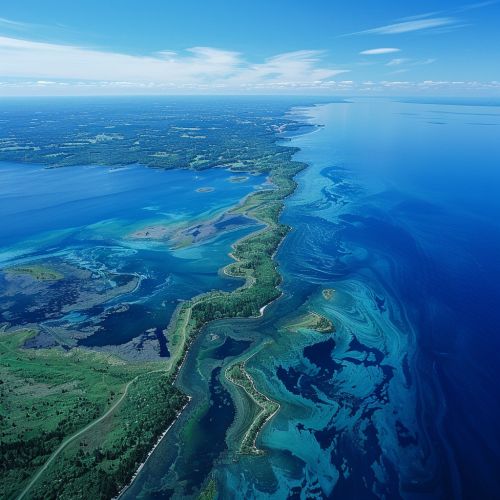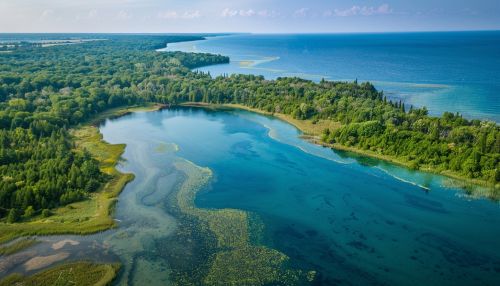Great Lakes
Introduction
The Great Lakes are a series of interconnected freshwater lakes located primarily in the upper mid-east region of North America, on the Canada–United States border. They are the largest group of freshwater lakes on Earth by total area, and second largest by total volume, containing 21% of the world's surface fresh water by volume.
Geography
The Great Lakes consist of five lakes: Superior, Michigan, Huron, Erie, and Ontario. They form the largest group of freshwater lakes on Earth by total area, spanning an area of over 94,000 square miles. The Great Lakes are all connected by a variety of rivers and straits, forming a cohesive water system often referred to as the 'Great Lakes Basin'.


Geology
The formation of the Great Lakes began at the end of the last glacial period around 14,000 years ago, when the Laurentide Ice Sheet receded. The retreat of the ice sheet left behind a large amount of meltwater that filled up the basins that the glaciers had carved, thus creating the Great Lakes as we know them today.
Climate
The Great Lakes region experiences a humid continental climate, characterized by large seasonal temperature differences. The lakes themselves have a significant effect on the climate, causing lake effect snow in the winter and a moderation of temperatures in the summer.
Flora and Fauna
The Great Lakes region is rich in biodiversity, with numerous species of plants and animals. The lakes themselves are home to a variety of fish species, including the lake trout, walleye, and yellow perch. The surrounding land areas are characterized by mixed forests of pine, maple, and fir.
Economy
The Great Lakes are a major hub for commerce and transportation, with numerous ports along their shores. They provide a route for the shipment of goods and commodities, and are a significant economic resource for both the United States and Canada.
Environmental Concerns
There are numerous environmental concerns associated with the Great Lakes, including pollution, invasive species, and climate change. Efforts are being made to address these issues and preserve the health of the lakes for future generations.
